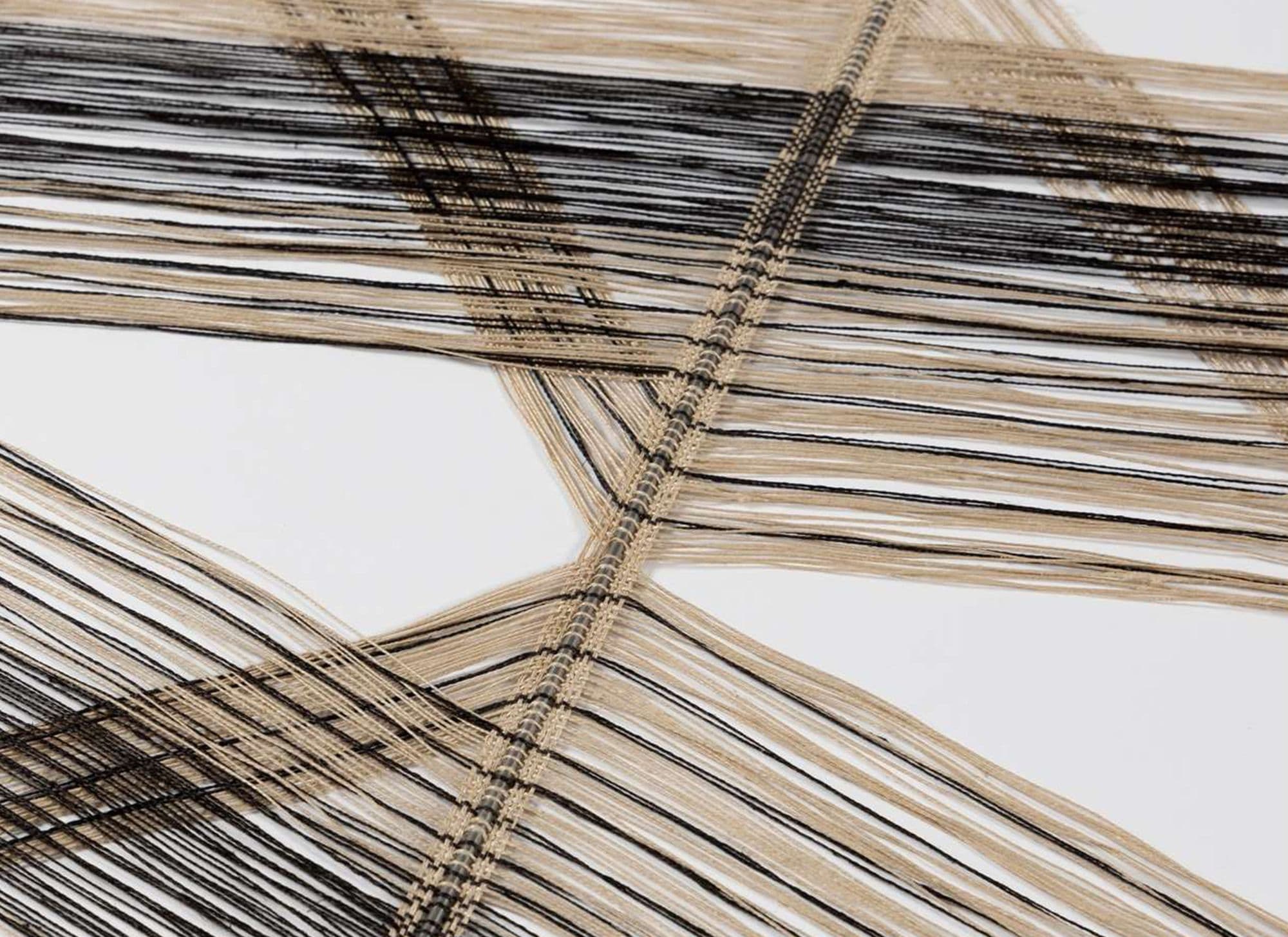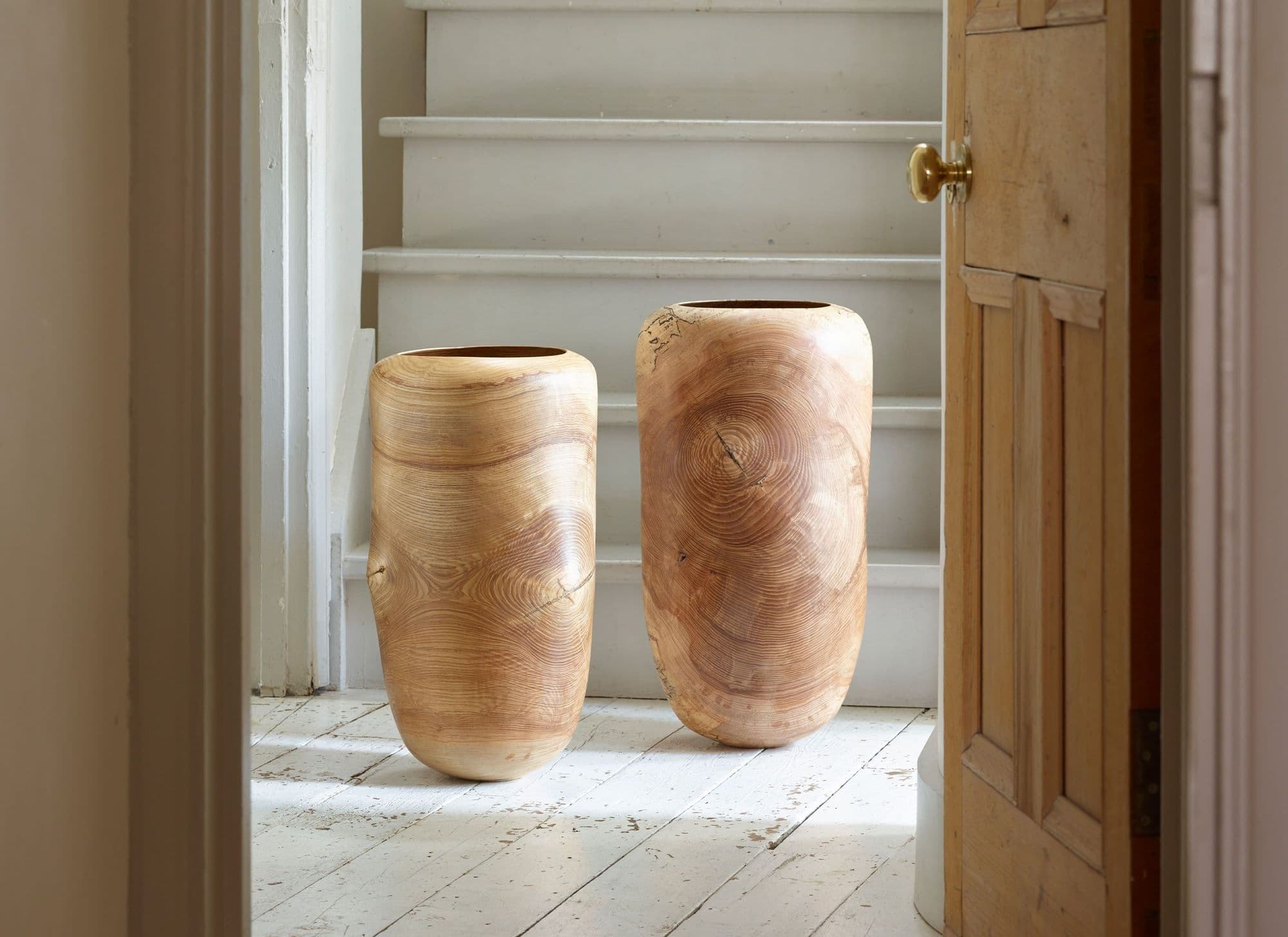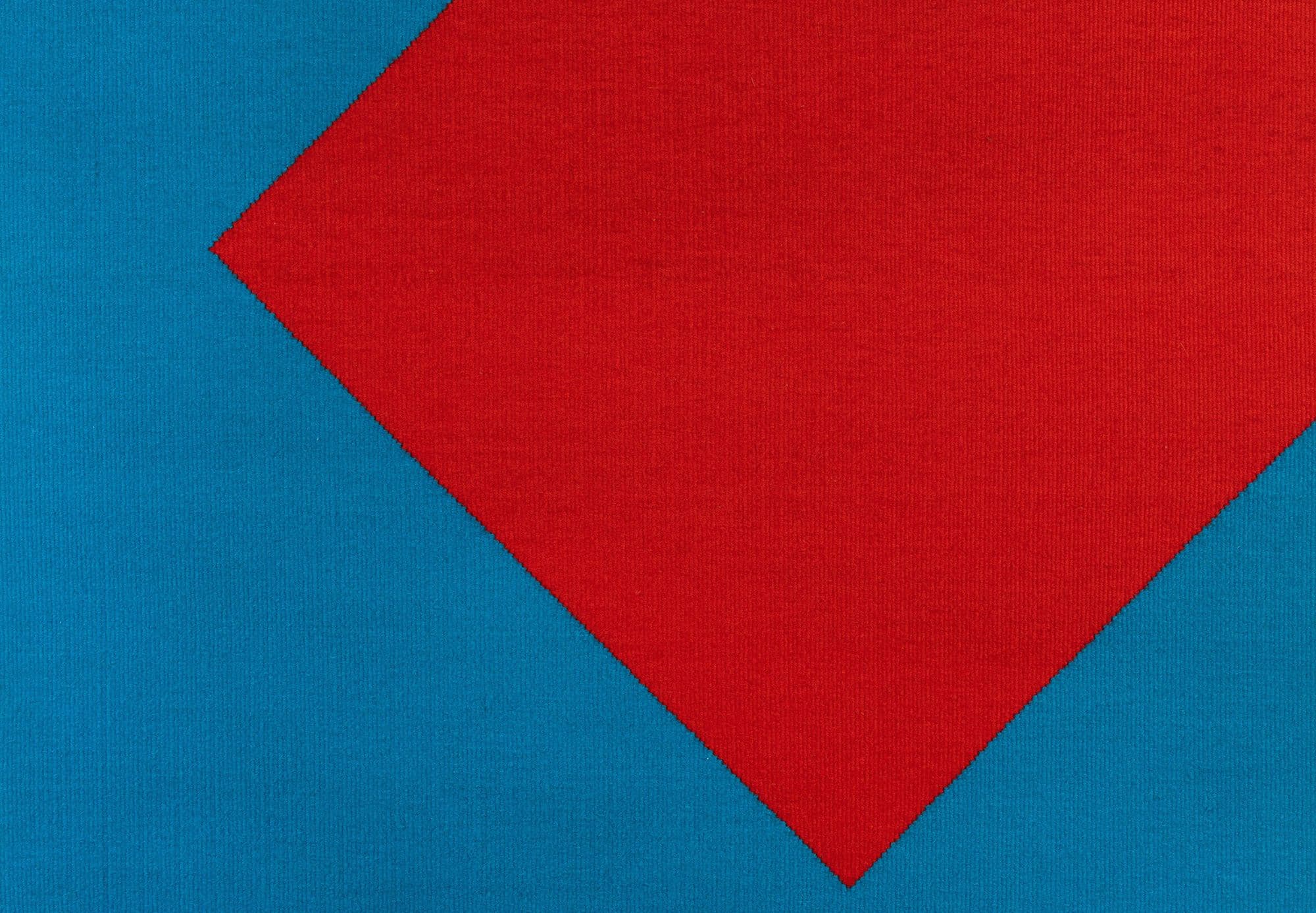Peter Collingwood is the most celebrated British artist weaver of the last 50 years.
His work reflects the artist’s ability to combine traditional skill and visual abstraction in perfect harmony. Collingwood’s innovative works seamlessly blend traditional techniques with contemporary aesthetic abstraction to create unique objects that create a dialogue between the past and the future.
Born in Marylebone in London in 1922 to academic parents, Collingwood was quick to find his calling as a weaver. During his national service, he made his own loom out of two deckchairs on which he produced scarves for the officers’ wives. Following this, he spent six months in the workshop of Ethel Mairet, one of the most significant weavers of the twentieth century and then worked for Barbara Sawyer and Alastair Morton. In 1952, Collingwood established his own workshop in north London where he began a lifetime of aesthetic experimentation and wove rugs that he sold through important retailers such as Liberty’s and Heal’s. In 1957, he became one of the first fellows of Henry Morris’ Digswell Arts Trust in Hertfordshire, and from 1964 in Nayland near Colchester where he converted an old school into his home and studio.
From the mid 1960s, Collingwood began to create his iconic macrogauze hangings. These works are instantly recognisable for the way in which the linen thread wraps amongst the steel rods to cross each other to create visual abstractions that are admired worldwide. This began an enduring interest of Collingwood, creating these pieces in both 2D and 3D, following mathematical sequences. ‘Macrogauze 1’ was included in the 1965-67 touring exhibition of the V&A ‘Weaving for Walls’. Following this, the V&A also staged a joint show in 1969 entitled ‘Coper/Collingwood’ that placed his work alongside his contemporary and coworker Hans Coper.
In 1974, Collingwood was appointed OBE. His work is highly coveted and is held in important private collections and public institutions internationally including Tate in London, the Cooper Hewitt Smithsonian Design Museum in New York, and the Art Institute of Chicago.





